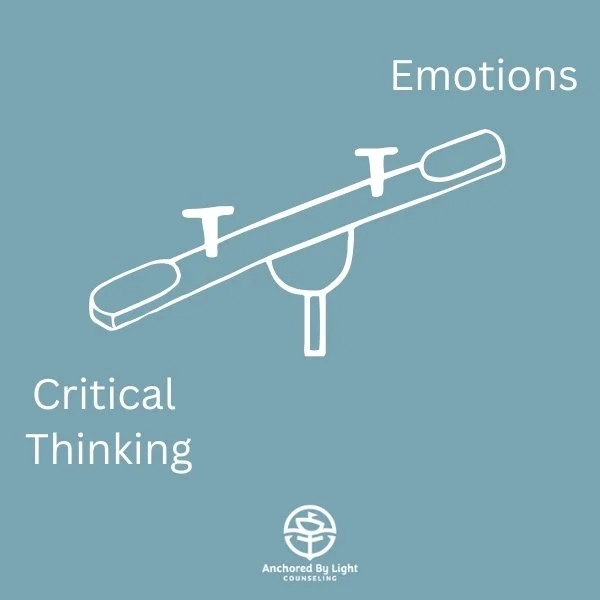The Seesaw Effect: The Impact Emotions Have on our Thinking
Have you ever been left absolutely speechless in a moment of heightened emotion? Ever felt like the words to describe your intense feelings are inaccessible? Or even worse… have you ever found yourself deeply regretting the way you behaved and decisions you made when you were overwhelmed by your feelings?
Don’t worry, you’re not alone… and there’s a perfectly logical explanation as to WHY this happens to you (and all of us!). You see, the part of our brain that is responsible for our emotions is the amygdala. Fun word, I know. This teeny little area located deep inside of our brain is what gets fired up when our emotions are running high. The thing is, though it is small, it is mighty. The amygdala commands the brain in such a way that the area responsible for our executive functioning (or making sound, logical decisions), the prefrontal cortex, gets shut down while the amygdala has all of the fun. Thusly, we find ourselves unable to think clearly or make sound, logical decisions we would normally have no problem navigating in emotionally neutral circumstances. So what can we do about it? Let’s take a closer look at each of the areas.
Amygdala
Such a fun word…I smile every time I say it. Now, I am not going to go into major detail about all of the incredible sciency-stuff about this part of the brain, but I do want to highlight some key details as it relates to the way our mind is influenced:
the amygdala is essentially the boss of the emotional processing in our brain
takes in emotional cues
alerts fight/flight response
remembers traumatic experiences
plays a significant role in fear, pleasure, and anxiety
And here’s the kicker- this little part of the brain has the power to block the prefrontal cortex! Let’s check out what that means.
Prefrontal Cortex
So our prefrontal cortex is directly behind our forehead…and occupies quite significantly more space than the amygdala. And yet, it can be completely overtaken by the amygdala when our emotions are running high. This would then impact the following functions the prefrontal cortex manages:
planning
decision making
problem-solving
impulse control
reasoning
and a myriad of other cognitive-focused functions.
Thaaaaat’s right. The very things you NEED in order to navigate a tricky, emotional situation with grace are the VERY THINGS that are HALTED by your raised emotional state. What’s a person to do?!
There’s HOPE!
The interplay between the amygdala and prefrontal cortex is complimentary. This means, while one is up, the other is down, and vice versa. What this means for YOU: if you want your executive functioning to be optimized, you have to manage the emotions and bring them back down. Likewise, if you’re finding you are overly cerebral when moving through challenging times and you don’t really “feel” much, it might be because your prefrontal cortex has taken over and the amygdala doesn’t get a chance to do what it does best. Living exclusively in one or the other is not great for human thriving…it’s all about balance.
So, now what?
Here are some ways to navigate the balance between the amygdala and prefrontal cortex during an emotionally heightened situation:
Check in with your body and understand the cues it is sending you when your amygdala is activated (racing heart, sweaty palms, upset stomach, brain fog, speechlessness, etc).
When your feelings become overwhelming and take control, it is important to pause and wait before making any decisions. Allow yourself the time to feel more calm and centered, so that your choices come from a place of clarity rather than emotional intensity.
See if you can encourage the activation of the prefrontal cortex by evaluating the situation from a cognitive-focus, instead of feelings-focus. (For example, "That person just honked at me and flipped me off. I am safe in my car and I have the ability to move to an area to regain my composure. I can call someone if I need to. I do not need to react in this moment.)
Once you have returned to an emotionally-neutral state, you can be better equipped and positioned to make a decision in response to what happened as opposed to merely reacting.
This process can be challenging if you’ve never approached it in this way before. If you need help moving through an emotionally challenging situation or circumstance, let’s talk!


